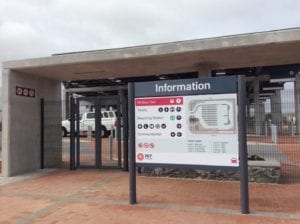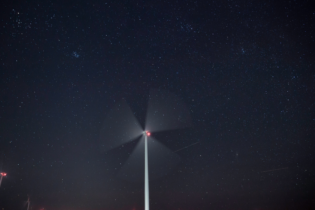The City of Cape Town has unveiled the first ‘green’ transport facility in South Africa that generates its own electricity, enabling it to operate off the electricity grid.
The Wallacedene taxi rank is the first public transport facility in the country to be regarded as a green building from its very foundation to the rooftop. It is largely self-sufficient in all its energy needs and saves thousands of litres of water through clever design. Furthermore all the water used at this facility, besides drinking water, is provided for through rooftop rainwater harvesting and recycling. Read more below: “The City of Cape Town is extremely proud to be at the forefront of combining intelligent architectural design and technology in our effort to improve service delivery to our residents,” said the City’s Mayoral Committee Member: Transport for Cape Town, Councillor Brett Herron. “The Wallacedene taxi rank sets the benchmark for future public transport facilities in the country, showcasing the City’s commitment to conservation and innovation.” Operating off the gridThis taxi rank uses a rooftop solar photovoltaic (PV) panel system, arrayed at optimum orientation to the sun, for its electricity generation. It is equipped with 24 large batteries for the storage of reserve solar electricity to be used at night or on cloudy days. Everything from the LED lights under the roof, to the electronic gates at the entrance and the hydro-boils in the kitchen is powered by this PV system. “In fact, since 1 August 2014, this facility only needed one hour’s worth of electricity from Eskom which we believe was needed only because the contractors used power tools on site during the final construction phase,” said Herron. It is estimated that the capital cost of this solar installation will be recovered within six to ten years in monthly energy cost savings.
Water saving
In designing this taxi rank, the city’s architects had to take into consideration the huge demand for water at the site for washing taxis. The use of potable water for car washing is regarded as a colossal waste of resources. The taxi rank was designed in such a manner that it can be self-sufficient in meeting its basic water needs; firstly through the harvesting of rainwater and secondly by recycling up to 70% of the water used at this facility through an underground filtering and reclamation system. The rank’s considerable roof area is used for harvesting of rainwater which is stored in an underground tank system with a storage capacity of up to 20 000 litres. The tank is equipped with the necessary infrastructure to pump this water to the washing bays. This water savings system is to the benefit of the residents, the City and taxi operators alike. Potable water will be conserved and there will be a considerable reduction in monthly water bills, ensuring the future sustainability of the taxi rank washing bay. Four-star green ratingThe Wallacedene public transport facility will achieve a four-star rating from Green Star South Africa. Helping the community
Approximately 5 000 commuters will be arriving at or departing from this taxi rank on a daily basis, with approximately 50 minibus-taxis operating from the rank. Previously the passengers and operators had to operate from an open piece of land with no formal infrastructure. There are full flush toilets at the facility, recycling bins, as well as loading bays for the operators and benches for commuters. Furthermore trading opportunities have been created for local entrepreneurs with the provision of six informal trading bays and two kiosks just outside the facility. “We have spent approximately R25 million to build a public transport facility that is safe, secure and decent and the City is certain that the elderly, women, children and people with special needs in particular, will benefit from this new development. This project is a confirmation of our commitment to improving our residents’ access to public transport, especially those who live far away from opportunities and amenities, spending about a third of their income to get to work and back,” said Herron.











